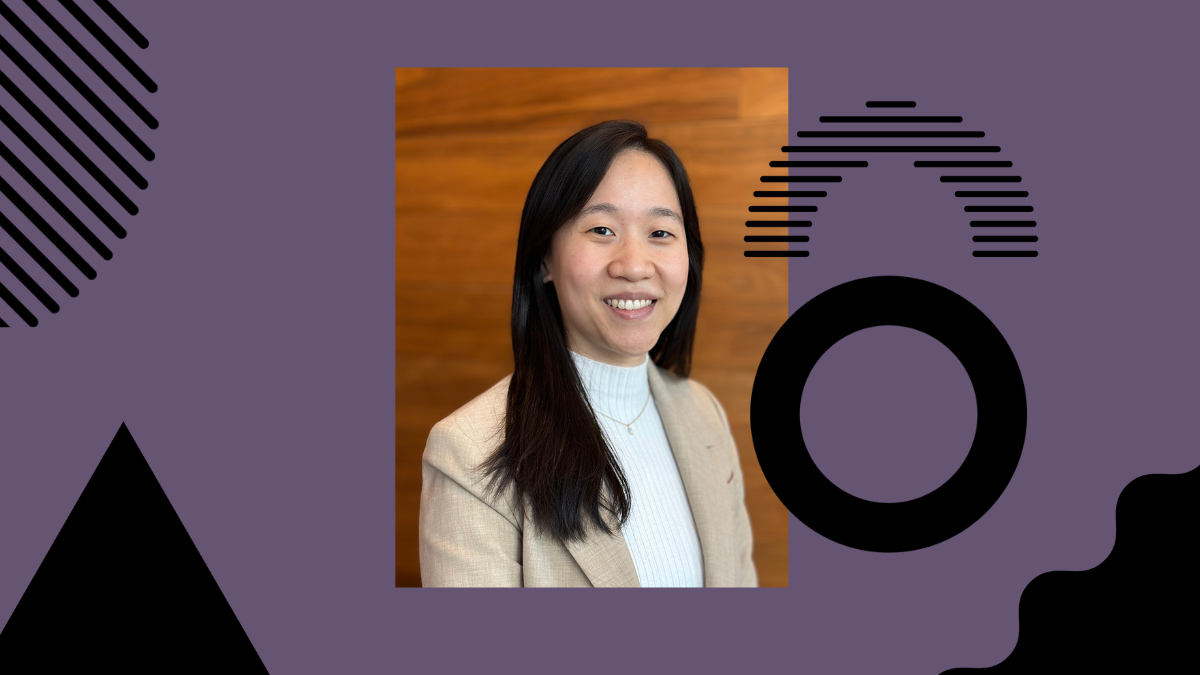Q&A with Joy Shi

Joy Shi is an epidemiologist at the Mongan Institute, Massachusetts General Hospital and CAUSALab, Department of Epidemiology, Harvard T.H. Chan School of Public Health. She is interested in target trial emulation, causal inference methods (particularly instrumental variables), and pedagogy. Her research focuses on applications of target trial emulation and improving causal inference methods to answer clinically relevant questions about the treatment and prevention of chronic diseases. Read the following Q&A to learn more about Shi’s new role, her time as a student, research interests, teaching and more.
Can you tell us about your new role as investigator in Mongan Institute at Mass General?
I am excited to have recently joined the Health Policy Research Center within the Mongan Institute at Massachusetts General Hospital. In this role, my research is focused on health policy and comparative effectiveness, with a particular emphasis on applying causal inference methods to evaluate real-world health care delivery and outcomes for cancer and cardiovascular disease. One of my main goals in this new role is to deepen my expertise in analyzing national and local health policies, and leveraging large, nationally representative datasets like Medicare claims. A particularly rewarding aspect of this role has been the opportunity to meet and start new collaborations with other health policy experts and clinician-scientists at MGH.
You graduated with a PhD, Population Health Sciences (Epidemiology) in 2020. How was your time here as a student and how did it prepare you for your current role?
I entered the program with a wide range of interests, and the first two years, through coursework and interactions with peers and faculty, gave me the space to explore different topics and research areas. During that time, I developed an interest in causal inference, an area I knew very little about when I started but that has since become a central focus of my work. The program’s interdisciplinary structure also gave me the chance to collaborate with colleagues from different departments and encouraged me to think beyond disciplinary boundaries. Many of the relationships and collaborations I built during those years continue to shape my current work as I look for opportunities to extend causal inference methods into new research areas.
What are some current research questions you’re excited to be working on?
There are a few different lines of research that I am excited about right now. Much of my work focuses on evaluating cancer screening strategies, particularly for colorectal and prostate cancer. For example, I conducted per-protocol analyses of the NordICC trial, a large pragmatic randomized trial of colonoscopy screening, using standardization and instrumental variable methods. I am also currently applying a target trial framework to evaluate prostate cancer screening strategies using electronic health record data from the Department of Veteran Affairs, and I plan to extend this line of work to evaluate mammography screening among older women—an area where evidence is limited and guideline recommendations are inconsistent. Beyond screening, a major part of my research focuses on instrumental variable methods, including developing better ways to apply these approaches in real-world settings, address challenges like time-varying exposures, and strengthen the validity of key assumptions.
Teaching also plays a large role for you. Can you talk a little about your current teaching commitments, in particular your role as a core instructor for the CAUSALab summer courses?
I have always been passionate about teaching and am excited to have the opportunity to extend that into my current role. The focus of my academic career has been to make causal methods more accessible to researchers, and teaching plays a big part of that. I am currently a co-instructor for EPI289 at the Harvard Chan School, where I get to work with incredibly thoughtful and engaged graduate students whose questions always push me to think deeper about these methods. I also teach as part of the CAUSALab summer courses, which has been a wonderful opportunity to engage with the broader research community — from graduate students to long-established researchers across academia and industry. The courses I’m involved with include Fundamentals of Confounding Adjustment (a newly launched online prerequisite course), as well as Advanced Confounding Adjustment and Target Trial Emulation. Across all of these courses, we aim to integrate practical, hands-on experiences so that participants can immediately apply what they learn to their own research. It’s always fascinating to see the range of research areas where students are excited to apply these methods.
What do you hope to do in the near future? Are there opportunities for researchers to collaborate with you?
Looking ahead, I’m excited to explore the intersection between machine learning and causal inference, especially as we think about how to make causal methods more flexible and scalable when working with large administrative health datasets. It feels like a particularly exciting time in research — there are so many important questions that causal methods and the availability of large-scale data can help us answer to ultimately improve patient outcomes and inform better policy decisions. I’m always open to new collaborations and eager to connect with researchers interested in applying causal inference approaches to their work. One of the things I enjoy most about methods research is the opportunity to work across diverse substantive areas. Collaborating with clinical and policy experts not only helps ground methods development in real-world challenges, but also sparks creative solutions tailored to specific research questions.
What’s something (personal) that people don’t know about you? (fun fact, hobbies, etc.)
I set an annual reading challenge for how many books I want to read for the year (and inevitably fall behind). I also cycle through many random hobbies, including cooking, board games, and taking care of my 30+ houseplants—most recently, I’ve gotten into crocheting.

